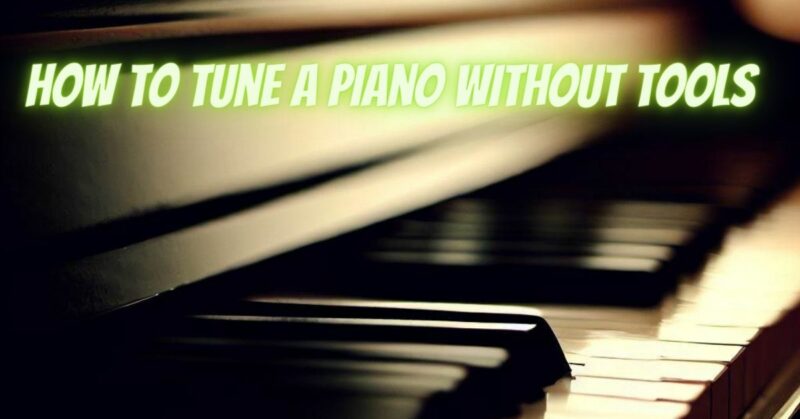Keeping your piano in tune is essential for maintaining its optimal sound quality. While professional piano tuners use specialized tools and expertise to achieve precise tuning, there are a few simple techniques you can try to improve the overall pitch of your piano. In this article, we will explore how to tune a piano without tools, providing a basic guide to help you achieve a better sounding instrument.
- Utilize a Reference Pitch:
a. Find a reliable reference pitch to use as a guide for tuning your piano. You can use online tuning apps, pitchforks, or reference recordings.
b. It’s important to note that without specialized tuning tools, your tuning may not be as accurate as professional tunings, but it can still improve the overall pitch of the piano.
- Tune the Middle C:
a. Start by locating the middle C on your piano. It is usually the white key closest to the middle of the keyboard.
b. Compare the pitch of the middle C to your chosen reference pitch. Adjust the tension of the corresponding piano string to match the desired pitch.
c. To adjust the tension, gently turn the tuning pin in small increments clockwise to increase the pitch or counterclockwise to decrease the pitch. Be careful not to over-tighten the string.
- Tune the Octaves:
a. Once the middle C is in tune, use it as a reference to tune the octaves above and below.
b. Play the middle C and its corresponding octave notes simultaneously and listen for any noticeable discrepancies in pitch.
c. Adjust the tension of the strings in the octaves, following the same procedure as before, until they match the desired pitch.
- Use Relative Pitch:
a. If you have a good sense of relative pitch, you can try tuning the rest of the piano by ear.
b. Play each note in the scale, starting from the middle C, and compare it to the reference pitch or the previously tuned notes.
c. Adjust the tension of the strings accordingly to match the pitch of the reference or the previously tuned notes.
- Regular Maintenance and Professional Tuning:
a. While tuning a piano without tools can help improve its pitch, it is important to remember that regular professional tuning is necessary to maintain its overall performance and prevent potential damage.
b. Schedule regular professional tunings, typically every six months or as recommended by a piano technician, to ensure accurate and consistent tuning.
Conclusion:
While tuning a piano without specialized tools is challenging and may not achieve the same precision as professional tunings, it can still improve the overall pitch of the instrument. By utilizing a reference pitch, tuning the middle C and octaves, using relative pitch, and scheduling regular professional tunings, you can maintain a more pleasing sound from your piano. However, for the best and most accurate results, it is always recommended to seek the services of a professional piano tuner who has the necessary tools and expertise to ensure precise tuning and optimal performance.

